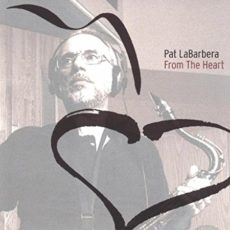
Daily Dose Of Jazz…
Pat LaBarbera was born Pascel Emmanuel LaBarbera on April 7, 1944 in Mt. Morris, New York. He began as a soloist in Buddy Rich bands from 1967–1973 and went on to work with Elvin Jones in 1975 and touring Europe with him in 1979. While working with Rich, he was also working in groups led by Woody Herman and Louie Bellson, as well as playing with Carlos Santana.
He moved to Toronto, Ontario in 1974 and is a on the faculty at Humber College. LaBarbera has played a major role in the development of a generation of Canadian saxophonists. He has released a handful of albums as a leader since 1975 and another two-dozen as a sideman. In 2000, he won a Juno Award for Best Traditional Instrumental Jazz Album for Deep in a Dream.
He is the brother of trumpeter John LaBarbera with who he is a part of his big band, and drummer Joe LaBarbera and worked with the Dave McMurdo Jazz Orchestra, Denny Christianson, Jan Jarczyk. Tenor, alto and soprano saxophonist, clarinetist, and flautist Pat LaBarbera continues to teach, perform and record.
#preserving genius
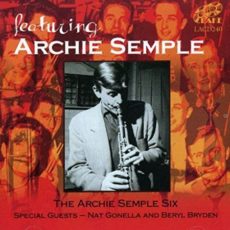
Daily Dose Of Jazz…
Archie Semple was born Archibald Stuart Nisbet Semple on March 31, 1928 in Edinburgh, Scotland and played locally in Edinburgh at the start of his career, often with his trumpeter brother John.
Semple led several of his own bands before joining Mick Mulligan in 1952. He then worked with Freddy Randall in 1953-54, Roy Crimmins and Alex Welsh from 1955 to 1963, becoming one of Welsh’s most important sidemen.
He recorded as a leader in the late 1950s and early 1960s as well, but retired due to an encroaching drinking problem that led to health issues in the middle of the decade.
A very distinctive player with a rich and quirky musical imagination, Semple was one of the most strikingly individualistic musicians to emerge from the sometimes predictable British trad scene. His presence in the already formidable Welsh band helped to create much memorable music.
Clarinetist Archie Semple, whose influences included Edmond Hall and Pee Wee Russell passed away on January 26, 1974 in London, England.
Sponsored By
#preserving genius
More Posts: clarinet
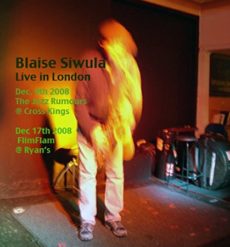
Daily Dose Of Jazz…
Blaise Siwula was born in Detroit, Michigan, on February 19, 1950 and grew up in a working/middle-class Black neighborhood. His next-door neighbor practiced saxophone in the afternoon and occasionally allowed him inside to watch him play. He began studying the alto saxophone at the age of 14, playing in the middle-school concert band. But, upon hearing John Coltrane’s Om in 1969, he was compelled to take the tenor saxophone and make it his voice.
He attended college on and off for an extended period from 1968-1980, studying theory and composition at Wayne State University and earning his B.F.A. degree. Siwula’s first personal encounters with jazz musicians came around 1971 with drummer Doc Watson, while both were living in a hotel near the downtown campus of Wayne State. Then the saxophonist got married, moved to San Francisco, California and started playing free improvised music in coffee houses and writing poetry.
Influenced by hearing Art Pepper in San Francisco, as well as Ornette Coleman, Sonny Stitt, Archie Shepp, Pharoah Sanders, Sun Ra, Blue Mitchell, Elvin Jones, and Miles Davis in memorable live performances around the Detroit area in the early ‘1970s. After spending four years in Northern California, Blaise moved back to Detroit, then headed for Europe in 1989, working and traveling as a street musician for three months, then returning to the States and settling in New York City.
Active on the metro New York improvisation scene, he worked with Amica Bunker, the Improvisers Collective, and the Citizens Ontological Music Agenda (COMA) series. During the decade of the 2000s, he concentrated his efforts as a spontaneous composer incorporating traditional musical scoring techniques with visual/graphic and performance-oriented presentations.
Over the course of his career he has played or collaborated with Doug Walker’s Alien Planetscapes, Cecil Taylor’s Ptonagas, William Hooker’s ensembles, Judy Dunaway’s Balloon Trio, Dialing Privileges with Dom Minasi and John Bollinger, Karen Borca, William Parker, Jeff Platz, Adam Lane, Wilber Morris, Vincent Chancey, Theo Jörgensmann, Rashid Bakr, Tatsuya Nakatani,, Jay Rosen, Sarah Weaver, Fala Mariam, Ernesto Rodrigues, Hilliard Greene, Joe McPhee, Ernesto Diaz-Infante, Maria De Alvear, Vattel Cherry, and Jeff Arnal, among others.
Avant-garde alto saxophonist Blaise Siwula also plays the clarinets, flutes, percussion and string instruments and continues to perform and record free jazz and curate.
Sponsored By
www.whatissuitetabu.com
![]()
#preserving genius
More Posts: clarinet,flute,percussion,saxophone,strings
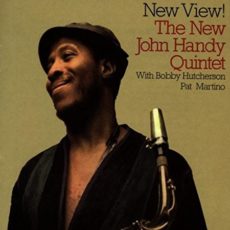
Daily Dose Of Jazz…
John Richard Handy III was born on February 3, 1933 in Dallas, Texas and first came to prominence while working with Charles Mingus in the 1950s. By the 1960s, he was leading several groups, among them a quintet with violinist Michael White, Jerry Hahn on guitar, Don Thompson on bass, and drummer Terry Clarke. This group’s performance at the 1965 Monterey Jazz Festival was recorded and released as an album and he received Grammy nominations for jazz performance of Spanish Lady and jazz composition for If Only We Knew.
As an educator Handy has taught music history and performance at San Francisco State University, Stanford University, the University of California, Berkeley, the San Francisco Conservatory of Music, and other schools.
The 1980s saw John working on the Mel Martin project Bebop & Beyond, recording tribute albums to Dizzy Gillespie and Thelonious Monk. He has recorded some eighteen albums as a leader for Roulette, Columbia, Impulse!, Warner, MPS, Milestone, Koch Int’l and Boulevard record labels. He has had one compilation released of selections from In The Vernacular and No Coast Jazz, and and has recorded two albums with Brass Fever, as well as, five albums during his time with Mingus.
Alto saxophonist John Handy, who also plays tenor and baritone saxophone, saxello, clarinet, oboe and sings, continues to perform and record.
#preserving genius
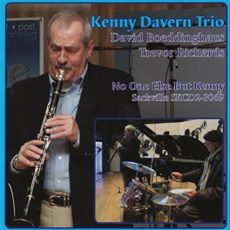
Daily Dose Of Jazz…
Kenny Davern was born John Kenneth Davern on January 7, 1935 in Huntington, Long Island, New York of Austrian-Irish ancestry. After hearing Pee Wee Russell the first time, he was convinced that he wanted to be a jazz musician and at the age of 16 he joined the musician’s union, first as a baritone saxophone player. In 1954 he joined Jack Teagarden’s band, and after only a few days with the band he made his first jazz recordings.
He would later work with bands led by Phil Napoleon and Pee Wee Erwin before joining the Dukes of Dixieland in 1962. The late 1960s found him free-lancing with, among others, Red Allen, Ralph Sutton, Yank Lawson and his lifelong friend Dick Wellstood.
Davern had taken up the soprano saxophone, and when a spontaneous coupling with fellow reedman Bob Wilber at Dick Gibson’s Colorado Jazz Party turned out be a huge success, one of the most important jazz groups of the 1970s, Soprano Summit, was born. The two co-led the group switching between the clarinet and various saxophones, and over the next five years Soprano Summit enjoyed a very successful string of record dates and concerts. When the group disbanded in 1979, he devoted himself to solely playing clarinet, preferring trio formats with piano and drums.
He revived his collaboration with Bob Wilber in 1991 and the new group was called Summit Reunion. Leading quartets since the 1990s, Kenny preferred the guitar to the piano in his rhythm section, employing guitarists Bucky Pizzarelli, Howard Alden and James Chirillo. He appeared numerous times at the Colorado Springs Invitational Jazz Party; in 1997 he was inducted into the Jazz Hall of Fame at Rutgers University, and in 2001 he received an honorary doctorate of music at Hamilton College, Clinton, New York.
Mainly playing in traditional jazz and swing settings, he ventured into the free-jazz genre collaborating in 1978 with avant-garde players Steve Lacy, Steve Swallow and Paul Motian that produced the album titled Unexpected. He also held an ardour and knowledge of classical music. Clarinetist Kenny Davern passed away of a heart attack at his Sandia Park, New Mexico home on December 12, 2006.
![]()
#preserving genius




